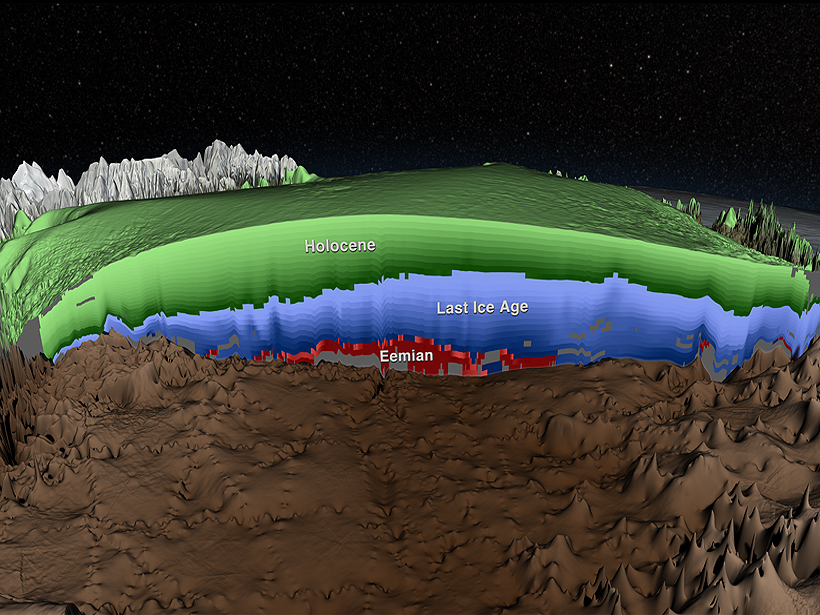Source: Journal of Geophysical Research: Earth Surface
Although the Greenland Ice Sheet has been surveyed extensively since the 1960s using ice-penetrating radar, efforts to map the ice sheet’s internal structure directly have been limited. This is because tracing the internal reflections observed by radar—“layers” that indicate changes in ice composition—is labor intensive and difficult in areas of complex ice flow. Consequently, despite the valuable insights into ice sheet dynamics provided by such surveys, numerous data sets currently exist for which few or no internal reflections have been mapped or interpreted.
To harness these data, a team of researchers has developed new methods to semiautomatically trace and verify these layers and date them. By combining these results with established methods, MacGregor et al. have produced the first comprehensive radiostratigraphy of the Greenland Ice Sheet, opening the door for new insights into the ice sheet’s internal dynamics as well as its millennial-scale response to oceanographic, atmospheric, and subglacial forcings.
By analyzing nearly 480,000 kilometers of deep ice-penetrating radar data collected by the University of Kansas between 1993 and 2013, the researchers show that the ice sheet’s essential age structure is monotonous across large sectors, particularly within its upper layers. The base of the ice sheet, however, hosts numerous complex features and disrupted ice in several regions where ice begins to flow more quickly. Disrupted ice may also indicate where ice flow has changed suddenly in the past.
Using the oldest identified reflections, the researchers conclude that several areas in the ice sheet’s northern interior could hold undisturbed ice from the Eemian—the most recent interglacial period that lasted from about 130,000 to about 115,000 years ago—near the ice sheet’s bed.
The video below, developed by NASA’s Scientific Visualization Studio, uses 3-D animations to show exactly where Eemian ice can be found within the Greenland Ice Sheet. The team notes that these locations should be further evaluated as potential deep ice core sites.

The researchers argue that large-scale ice flow models should incorporate these new data so that they can better reproduce both the modern state of the Greenland Ice Sheet and its history, which likely contains clues to its future response to ongoing climate change. (Journal of Geophysical Research: Earth Surface, doi:10.1002/2014JF003215, 2015)
—Terri Cook, Freelance Writer
Citation: Cook, T. (2015), Ice-penetrating radar reveals age of Greenland Ice Sheet layers, Eos, 96, doi:10.1029/2015EO034237. Published on 13 August 2015.
Text © 2015. The authors. CC BY-NC 3.0
Except where otherwise noted, images are subject to copyright. Any reuse without express permission from the copyright owner is prohibited.

